The Mastiff vehicle family has a long history, but recent enhancements for Mali have given them a new lease of life and opened the possibility of a more enduring role.
As so often when looking at the history of a single vehicle, the story tends to start in several places; different programmes, concept studies, manufacturer relations, and individuals cross paths over many years, and in this regard, Mastiff is no different.
Before Mastiff
We can go as far back as the early nineties with the Royal Engineers route proving vehicles, the Alvis 4 and 8, then this, from Colonel James Anderson in the late nineties
The biggest threat to the Army’s mobility – in war and operations other than war – is landmines. Hence the most important programmes are now counter-mines programmes. This represents a considerable challenge. Of particular concern is trying to shift the balance of the overall programme without upsetting existing capabilities or distorting them too far.
Somewhat prescient.
By 2000, the British Army was up and running with the MINDER programme for route proving and reconnaissance. Experience in the Balkans has informed thinking about future operations and the likely prevalence of mines, although perhaps not IEDs as we might think of them.
Technical Solutions Group and Seafire then came into view, ultimately leading to the Tempest Mine Protected Vehicle, with the first deliveries in 2002.

Technical Solutions Group then became a subsidiary of Force Protection, and the US DoD ordered Buffalo-protected vehicles for use at Bagram airfield. MINDER was also cancelled in 2002.
In parallel, a replacement programme for Snatch and Tavern called Project DUCKBOARD was in progress and in July 2003, the Protected Patrol Vehicle (PPV) working group met to consider the options which included extending the lives of the existing Snatch Land Rovers, new military/commercial off the shelf vehicles and up-armouring existing vehicles such as the Pinzgauer. By August, however, events in Iraq were about to overtake this programme and a subsequent meeting in September placed timely delivery near the top of the list.
The first of the 208 Snatch Mk1 vehicles were delivered to Iraq, direct from Belfast, in November, alongside several Saxon vehicles.

A business case to modify the existing Snatch 1 vehicles already in the theatre with more suitable environmental capabilities was approved for £2.2m, referred to as ‘Snatch 1.5’. Project DUCKBOARD also progressed in parallel to the UOR Snatch modifications.
The ‘Rest of World PPV’ being defined would eventually become Vector. Main Gate Approval for Snatch 2 was sought. 312 Snatch 2 were planned to be obtained, and 208 to replace Snatch 1.5 in Iraq.
The contract value was £13m, with funding drawn directly from the DUCKBOARD budget line. The In-Service Date was planned for December 2004, with 80 delivered to Iraq.
In 2005, a reworking of the Protected Patrol Vehicle (PPV) statement of requirement resulted in a recommendation to convert the existing Snatch vehicles to Snatch Mk2 and order 100 Vector vehicles. An update from GOC (MND(SE)) in August 2005 raised concerns about the use of IEDs and the inability of the then-current vehicle fleet and ECM to cope.
The threat from IEDs is worrying, with our electronic counter-measures unable to defend against the [redaction] and the use of [redaction] and (in the most recent attack) shaped charges able to penetrate armoured vehicles up to and including [redaction].. This technology has now been used across MND(SE) and indeed further north having first been seen in Maysan
Theatre commanders were concerned about equipment issues in response to IEDs and the existing programmes were increasingly considered inadequate. In 2006, an MoD paper described how the Vector had been reduced from 153 to around 80 for affordability reasons.
For Project VECTOR, the Rest of World PPV, a commercial off-the-shelf solution was recommended with some examples already in service with other nations. The decision on VECTOR was one of speed. With plans advanced for HQ ARRC to deploy to Afghanistan and a likely shift of focus from Iraq to Afghanistan, obtaining suitable vehicles was a high priority.
Defense Review published an article in May 2006 about the success of the Force Protection 4×4 Cougar JERRV operated by the USMC, highlighting resistance to IED attacks.
4 years after the cancellation of the MINDER programme, 3 years after the invasion of Iraq and a year after the Mounted Countermine Capability programme was effectively cancelled, the MoD decided to have another go. This was a joint UK-Canadian programme called the Mounted Countermine Capability Concept Demonstrator or MC3D.
Pearson Engineering was awarded a 2-year contract from the MoD for the Mounted Countermine Capability Concept Demonstrator (MC3D). Canada also announced the EROC (Expedient Route-Opening Capability) programme that consisted of the Husky mine detector vehicle, and the Buffalo and Cougar mine-protected vehicles. For $29.6 million (Canadian) EROC consisted of six Husky’s, five Cougars, five Buffalo’s and 2 years of logistics support.
In the House of Lords, on the 12th of June 2006, Lord Astor of Hever asked the government about protected vehicles and the response from The Parliamentary Under-Secretary of State, Ministry of Defence (Lord Drayson) was;
My Lords, I am sure the House will wish to join me in expressing our sincere condolences to the families and friends of the soldiers killed and injured in Afghanistan yesterday. We do not comment on the level of protection of specific vehicles, for obvious reasons. Protected patrol vehicles are only one of a range of vehicles available to commanders to allow them to balance mobility, protection and profile based on the threat, the terrain and the task. PPVs offer a level of protection commensurate with their weight, size and role, together with good mobility and a low profile.
My Lords, I do not accept that Snatch Land Rovers are not appropriate for the role. We must recognise the difference between protection and survivability. It is important that we have the trade-offs that we need for mobility. The Snatch Land Rover provides us with the mobility and level of protection that we need. We had 14 RG-31s in Bosnia, which we took out of service some time ago due to difficulties with maintenance. We have looked at the RG-31 alongside a number of alternatives for our current fleet and concluded that the size and profile did not meet our needs. Size is important in the urban environment. The RG-31 cannot access areas that Snatch Land Rovers can get to
On the 26th of June 2006, Des Brown announced a review of armoured vehicles in Iraq:
As I have already said to the House, it is open for commanders to deploy vehicles that have heavier protection than the Snatch Land Rover … Other vehicles are available to them; there is a choice. However, commanders must be free to make decisions in relation to the operations for which they deploy soldiers. I have already said to the House that I am aware of the issue: I could not but be aware of it following my visit last week and, indeed, my earlier visit. I have asked for a review of what we can do in the long term and immediately. I shall see what we can do immediately to respond to the changing situation, although significant measures other than those in relation to the vehicle’s armour must be taken. We are at the leading edge of some of them, and electronic counter‑measures, in particular
Following a visit to South Africa
Also in June, Brigadier Moore wrote that if a better-protected PPV was required, RG-31 had the potential to meet the requirement.
It is now apparent that RG31 … has sufficient stretch potential to take the additional weight associated with protection against […]. In addition, LSSA [Land Systems South Africa] has a rigorous testing regime … and this is fully compliant with DSTL thinking. LSSA is innovative, front running and is at the leading edge of their trade. Should the Army want a heavier and better protected PPV, RG31 would be a strong contender.
This was quite an extraordinary view, especially given the MoD and government’s public rejection of the RG-31, both in response to questions from MPs and Lords, media scrutiny and its rejection of the Future Command and Liaison Vehicle.
In a 7th July memo, Lt Gen Houghton was unequivocal on the requirement for a medium PPV;
Later in the same month, Lord Drayson met with Major General Applegate to discuss suitable vehicles to meet the requirement. Although 25-30 Bushmasters were available as a loan from Australia, the two other most suitable contenders were the Protector (a variant of the RG-31) and the Iraq Light Armoured Vehicle (ILAV), a somewhat misleading title for what was a version of the Force Protection Cougar often referred to as Badger.
Additional work to determine the best option was then carried out. By the end of July, the MoD had selected the Force Protection Cougar to meet the Medium PPV requirements. The business case concluded that the RG-31 Mk2 Protector was immature and that the Bushmaster needed further investigation. On the 24th of July 2006, the UK announced it had ordered 100 Cougar vehicles from Force Protection. The same announcement also detailed the Vector order from BAE.
From Des Brown in the House of Commons:
I have made clear my determination to ensure the armed forces on operations have the resources they need to do the job. I said I would update the House on developments in two particular areas of operational capability: additional options for armoured vehicles and helicopter support for Afghanistan.
As I told the House on 26 June, I ordered an urgent review of our armoured vehicle fleet, particularly focused on the evolving threat in Iraq, but covering the whole operational picture including Afghanistan, to ensure we were providing commanders with the best options.
That review has now concluded. It has confirmed that there is a growing requirement for a protected vehicle with capabilities between our heavy armour, such as Warrior, and lighter patrol vehicles, such as SNATCH. The review has also identified feasible options to address the gap in the short term. We have now completed a very rapid assessment of those options and have identified three complementary ways forward. Two of these build on, and accelerate, work already ongoing in the Department. The third is new. The necessary funding will come in part from acceleration of existing funding within the defence budget, and in part from substantial new funding from the Treasury.The first element is an additional buy of around 100 VECTOR, our new Pinzgauer based protected patrol vehicle, for Afghanistan, on top of the 62 already on contract. VECTOR provides good protection and, importantly, increased mobility and capacity compared to SNATCH which makes it very suitable for the rugged terrain and long patrol distances in Afghanistan.
The second element is to provide around 70 additional up-armoured and upgraded FV430 to equip a mechanised infantry battlegroup for Iraq by the spring of 2007, again on top of the 54 we have already ordered. The FV430 will be delivered incrementally with the first vehicles currently expected to be delivered this autumn.
Significantly smaller and lighter than Warrior, the up-armoured FV430 will provide a similar level of protection while being less intimidating and having less impact on local infrastructure—thereby providing commanders with an important additional option. Since it is able to carry out many of the same tasks as Warrior, it will also relieve pressure on heavily committed Warrior vehicles and armoured infantry battlegroups.
The third, new element is the Cougar manufactured by Force Protection Incorporated of Charleston, South Carolina. We judge that this vehicle meets our requirement for a well protected, wheeled patrol vehicle with a less intimidating profile than tracked vehicles like Warrior or FV430. We are arranging to rapidly procure around 100 vehicles through US military sources. We have received excellent co-operation from the US Government, military and industry—an example of the special relationship bringing real benefits for our soldiers on the ground. Once we take possession of the vehicles, we must then customise them with Bowman radios and electronic counter-measures—and then fit additional armour beyond the standard level, to ensure they have the best possible protection. This procurement and enhancement process takes time. But we expect to be able to deliver the vehicles, in batches, with an effective capability in place before the end of the year and continuing through the next six month rotations in Iraq and Afghanistan.These three vehicles will complement existing Warrior and SNATCH. Warrior will continue to provide the capability to deal with the most demanding threats, but its profile and weight makes it unsuitable for some operations and situations, such as Afghanistan. SNATCH, with a much less intimidating profile, enables troops to interact with locals and promotes a sense of normality and will remain a key tool for building and maintaining consent. The up-armoured FV430, the Cougar medium PPV, and VECTOR fill the requirements for varying degrees of protection, mobility and profile between these two extremes. But I am confident that together these vehicles provide commanders with the right range of options to deal with the situations and threats they face.[
After a company-funded prototype was completed early in 2006, the MoD ordered 62 Vector Protected Patrol Vehicles, announced above, based on the Pinzgauer 6×6 chassis. These were destined for Afghanistan, and cost, £35 million.
The Defence Select Committee published their 13th Report in August, Operations in Iraq.
At its Basra Palace base, we met the UK’s 20 Armoured Brigade. We were shown the equipment used on patrol, particularly the Snatch Land Rover. We heard that Snatch were very good vehicles, but they were old and could often break down. Many had previously been used in Northern Ireland. They were fast and manoeuvrable but not well armoured and were particularly vulnerable to Improvised Explosive Device (IED) attack. Similar concerns were voiced by UK troops at the Shaibah Logistics Base
This period was intensely political, the Government was being accused of neglect and plain old lies by many MPs and commentators, and parts of the media were repeating MoD media’s lines to take, all whilst personnel in Iraq were struggling with an evolving threat.
By the end of 2006, the first Mastiff vehicles were delivered to British forces in Iraq, some twenty-odd weeks after order, a brilliant performance by all those involved. After deliveries started in 2006 the first 62 Pinzgauer Vector Protected Patrol Vehicles entered service in 2007. An order for an additional 118 vehicles, 12 of which were ambulance variants, was placed with BAE.

The Mastiff and Vector purchases were expected to cost approximately £120 million, Mastiff using UOR Treasury funding and Vector coming from Army budgets. In response to the explosively formed penetrator threat, the UK Mastiffs would be fitted with additional side armour to counter the EFP threat. It was later revealed that this initial batch of Mastiff cost £70m
By January 2008, all orders for Mastiff (bar four ambulance variants) had been delivered.
The MoD announced in October an additional order for 140 Mastiff vehicles in 2007, most of them destined for Afghanistan, and in early 2008, more vehicles were ordered.
The first batch of 151 Ridgeback was delivered to the UK in August, following a contract award to Force Protection that also included the Wolfhound Tactical Support Vehicle and the development of the Mastiff 2.
The additional protected mobility contracts were formally announced on the 29th of October 2008.
Defence Secretary John Hutton has announced a package worth £700 million today, which will pay for some 700 new armoured vehicles to further improve the safety and protection of troops on operations in Afghanistan. The Protected Mobility Package announced by Mr Hutton today, Wednesday 29 October 2008, includes provision of £350 million for 400 brand new armoured support trucks which will be used to accompany patrols and carry essential supplies such as water and ammunition. The three distinct categories of Tactical Support Vehicles (TSV) are:
Wolfhound: TSV (Heavy). Heavy armoured support trucks – supporting and re-supplying Mastiffs in the highest threat areas. These vehicles will have the highest levels of mine blast protection;
Husky: TSV (Medium). Medium armoured support trucks – carrying out the support roles in lower threat areas and where heavy vehicles, like Mastiff, cannot be used;
Coyote: TSV (Light). Light armoured support vehicles – supporting Jackals across the harsh terrain of Afghanistan.
Other vehicles which will be paid for out of the £700 million include:
Over 100 brand new cross-country vehicles called Warthog which, with greater protection levels, will replace Vikings in Afghanistan, and over 100 more Jackals, the extremely agile all-terrain vehicles which include high-levels of off-road mobility and firepower.
£96 million from the package will also be used to develop a specialist route clearance system known as Talisman, which will provide a new high-tech way of dealing with the IED (Improvised Explosive Device) threat. Among the Talisman vehicles to be developed will be the Buffalo mine-protected vehicle and the Engineer Excavator.
In addition, new vehicles, and upgrades and modifications were also announced today. 30 base Cougar vehicles will be purchased, a mixture of 4x4s and 6x6s, which will be modified to boost our training fleets for Mastiff and Ridgeback.
The new Panther vehicle has been modified and upgraded to prepare for its arrival in Afghanistan and a new variant of the Snatch has been developed, known as the Snatch-Vixen, which, specially designed for Afghanistan, has been given extra power and payload which enhances the mobility and protection of the vehicle.
Today’s announcement builds on previous measures that are already making a difference in Iraq and Afghanistan including the introduction of the hugely successful Mastiff with its superior levels of protection and the Jackal with its impressive firepower and speed, allowing troops to get off the tracks and roads and strike hard at the enemy from all directions. Mastiff’s smaller brother Ridgeback, due to arrive on operations early in the new year, will also add to these measures, delivering protection levels close to that of the Mastiff in a package that gives better access to urban areas. £500 million of the funding for the Protected Mobility Package has been allocated from the Treasury Reserve while Defence will fund a part of the package in acknowledgement of the long-term benefit to core defence capability these vehicles offer beyond our current commitments
Meanwhile, Mastiff had transformed mobility, despite its size and weight.

The MoD announced in October an additional order for 140 Mastiff vehicles, most of them destined for Afghanistan. The first batch of 151 Ridgebacks was delivered to the UK in August 2008, following a contract award to Force Protection that also included the Wolfhound Tactical Support Vehicle and the development of the Mastiff 2 although focused on improving Mastiff’s poor mobility.
It also included better seating and driver’s vision equipment.
This video from 2007 provides a good overview of the early versions
The additional protected mobility contracts were formally announced on the 29th of October 2008.
Defence Secretary John Hutton has announced a package worth £700 million today, which will pay for some 700 new armoured vehicles to further improve the safety and protection of troops on operations in Afghanistan.
The Protected Mobility Package announced by Mr Hutton today, Wednesday 29 October 2008, includes provision of £350 million for 400 brand new armoured support trucks which will be used to accompany patrols and carry essential supplies such as water and ammunition. The three distinct categories of Tactical Support Vehicles (TSV) are:
Wolfhound: TSV (Heavy). Heavy armoured support trucks – supporting and re-supplying Mastiffs in the highest threat areas. These vehicles will have the highest levels of mine blast protection;
Husky: TSV (Medium). Medium armoured support trucks – carrying out the support roles in lower threat areas and where heavy vehicles, like Mastiff, cannot be used;
Coyote: TSV (Light). Light armoured support vehicles – supporting Jackals across the harsh terrain of Afghanistan.
Other vehicles which will be paid for out of the £700 million include:
Over 100 brand new cross-country vehicles called Warthog which, with greater protection levels, will replace Vikings in Afghanistan, and over 100 more Jackals, the extremely agile all-terrain vehicles which include high-levels of off-road mobility and firepower.
£96 million from the package will also be used to develop a specialist route clearance system known as Talisman, which will provide a new high-tech way of dealing with the IED (Improvised Explosive Device) threat. Among the Talisman vehicles to be developed will be the Buffalo mine-protected vehicle and the Engineer Excavator.
In addition, new vehicles, and upgrades and modifications were also announced today. 30 base Cougar vehicles will be purchased, a mixture of 4x4s and 6x6s, which will be modified to boost our training fleets for Mastiff and Ridgeback.
The new Panther vehicle has been modified and upgraded to prepare for its arrival in Afghanistan and a new variant of the Snatch has been developed, known as the Snatch-Vixen, which, specially designed for Afghanistan, has been given extra power and payload which enhances the mobility and protection of the vehicle.
Today’s announcement builds on previous measures that are already making a difference in Iraq and Afghanistan including the introduction of the hugely successful Mastiff with its superior levels of protection and the Jackal with its impressive firepower and speed, allowing troops to get off the tracks and roads and strike hard at the enemy from all directions.
Mastiff’s smaller brother Ridgeback, due to arrive on operations early in the new year, will also add to these measures, delivering protection levels close to that of the Mastiff in a package that gives better access to urban areas.
£500 million of the funding for the Protected Mobility Package has been allocated from the Treasury Reserve while Defence will fund a part of the package in acknowledgement of the long term benefit to core defence capability these vehicles offer beyond our current commitments
This was a typical MoD news announcement, announcing the same things it had already announced, it was a welcome, if belated, recognition that vehicle protection was high on the priority list and the blind defence of Snatch, Vector and WMIK Land Rovers was no longer in any way tenable.
A Parliamentary Question revealed more details on Talisman
Ann Winterton: To ask the Secretary of State for Defence which vehicles make up the Talisman project currently subject to an urgent operational requirement; and what the in-service date of the project is.
Mr. Quentin Davies: Talisman is a project which will deliver a system of vehicles, sensors and techniques to counter improvised explosive devices. In doing this, the system will better enable safe movement along routes in Afghanistan.
Initially the system will include three vehicle types: Mastiff, Buffalo and High Mobility Engineer Excavator.
Talisman is scheduled for initial fielding during late 2009, although its development will continue beyond that point.
The Buffalo had been in service with the US since 2002, 6 years before this announcement, the same year that MINDER was cancelled.
Wolfhound was a cargo-carrying variant of the Mastiff.
The Mastiff command vehicle had an elevated ROTAS sensor and could be used with the CHOKER IED pre-detonation rollers, 100 Panama City Mine Roller Systems Gen III were ordered, the same that the USMC had used since 2006 and made by the Naval Surface Warfare Center
Mastiff 3 incorporated several improvements
Before reading on, would you mind if I brought this to your attention?
Think Defence is a hobby, a serious hobby, but a hobby nonetheless.
I want to avoid charging for content, but hosting fees, software subscriptions and other services add up, so to help me keep the show on the road, I ask that you support the site in any way you can. It is hugely appreciated.
Advertising
You might see Google adverts depending on where you are on the site, please click one if it interests you. I know they can be annoying, but they are the one thing that returns the most.
Make a Donation
Donations can be made at a third-party site called Ko_fi.

Think Defence Merch
Everything from a Brimstone sticker to a Bailey Bridge duvet cover, pop over to the Think Defence Merchandise Store at Red Bubble.
Some might be marked as ‘mature content’ because it is a firearm!
Affiliate Links
Amazon and the occasional product link might appear in the content, you know the drill, I get a small cut if you go on to make a purchase
In April 2013, the MoD placed an order with Force Protection for 47 Mastiff-protected vehicles and some conversion contracts were also let
- Mastiff Troop Carrying Variant (MAS TCV) to Mastiff Enhanced Communications Variant (MAS ECV) Conversion,
- Ridgeback Troop Carrying Variant (RBK TCV) to Ridgeback Command Variant (RBK CV) Conversion,
- Wolfhound Explosive Ordinance Disposal (WHD EOD) variant to Wolfhound Military Working Dog (WHD MWD) variant Conversion,
- Mastiff 1 to Mastiff 2 Conversion.
In the same month, news of the first casualties from an IED whilst in a Mastiff was released, two soldiers from the Royal Regiment of Scotland.
With operations in Afghanistan and Iraq concluded, most Mastiff and Ridgeback vehicles were recovered back to the UK, and discussions were held about bringing them into the core equipment plan and how they would be employed in future operations.
This video from NP Aerospace provides a great overview of the range of options and upgrades for Mastiff
The MoD confirmed the status of the Protected Mobility fleet in a parliamentary answer in late 2019
| Fleet | In Forward Fleet | In Reserve | In Storage | Total |
| Mastiff | 177 | 77 | 163 | 417 |
| Ridgeback | 53 | 21 | 94 | 168 |
| Wolfhound | 57 | 10 | 58 | 125 |
| Husky | 200 | 40 | 80 | 320 |
| Coyote | 57 | 7 | 8 | 72 |
| Warthog | 91 | 91 |
It is difficult to conclude that Mastiff/Wolfhound and Ridgeback were anything apart from an unqualified success, quick into service (after some decision-making delay), extremely effective, and continually developed over time.
But the answer below confirmed its time was done, and all would be disposed of.
In response to a written question from Mr Kevan Jones MP on the 29th of June 2020, the MoD described the intent to withdraw Mastiff from service
The Army continues to rationalise its legacy vehicle fleets, work commenced in 2017 under the Land Environment Fleet Optimisation Plan. This work has already removed 2,831 vehicles from service and disposed of a number of legacy vehicle fleets. The next strand of this work seeks to remove several further legacy vehicle types from service, including the disposal of the Mastiff, Ridgeback and Wolfhound fleets.
In a follow-up question tabled on the 9th of September, the number of Mastiff and Ridgeback vehicles in service was confirmed.
The number of vehicles procured is as follows:
| Fleet (all Variants) | Total Number Procured |
| Mastiff | 450 |
| Ridgeback | 171 |
| Wolfhound | 125 |
| Foxhound | 400 |
| Warthog | 115 |
| Jackal | 502 |
| Husky | 338 |
And then came Mali, proving yet again that hastily disposing of equipment is usually a mistake.
Against an Urgent Capability Requirement, NP Aerospace was awarded a £7m Protected Mobility Engineering & Technical Support (PMETS) Contract for the non-recurring design and implementation of a range of mobility and other improvements for 12 vehicles, both Mastiff and Ridgeback.
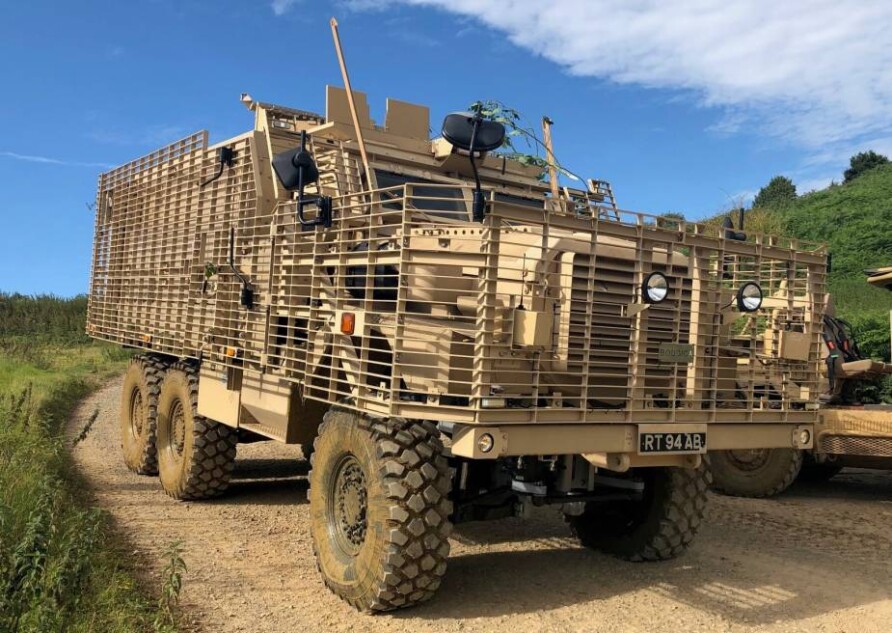
The contract is described as;
As engineering authority for the protected mobility fleet, NP Aerospace is leading the project with support from companies including HORIBA-MIRA, Horstman, Texelis, Timoney, Tyron and Universal Fabrications. A number of vehicles have already been deployed on operation during COVID-19 restrictions with the first wave delivered in just over 80 working days.
New vehicle systems have been implemented within the Ridgback and Mastiff to increase mobility, enhance safety and introduce new capabilities. These enhancements include state-of-the art, independent suspension systems incorporating Ride Height Control, along with upgraded driveline, steering and braking systems, central tyre inflation systems and increased diameter tyres.
£7m for 12 vehicles might sound expensive, but this is a small order with all the design work front-loaded, if additional vehicles are upgraded to the same specification, unit costs would be much lower.
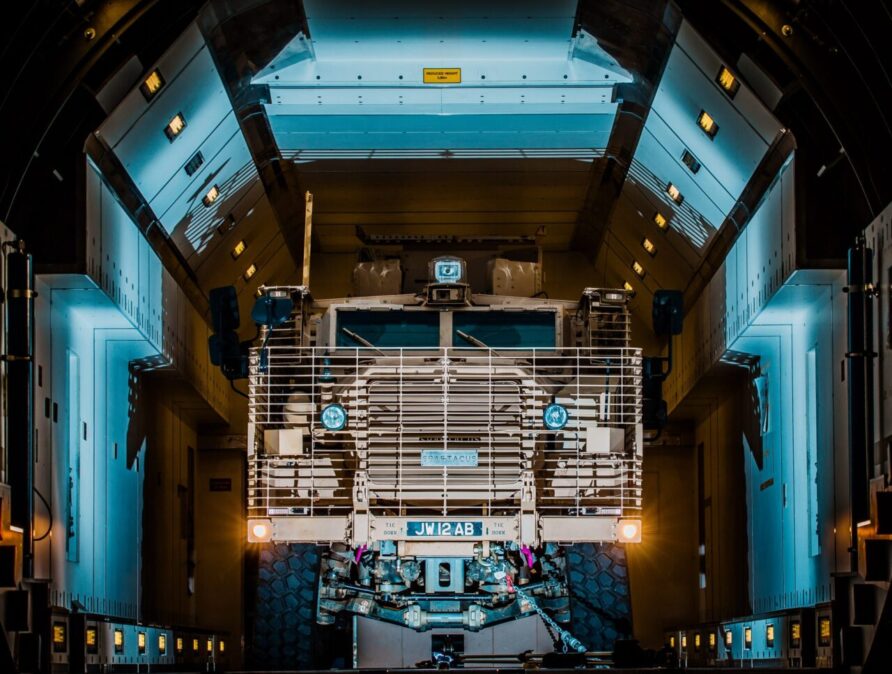
The MoD and industry have delivered an excellent package here, and it must be tempting to expand the numbers, especially as mobility has reportedly exceeded expectations and there is much potential left in the relatively large pool of vehicles we have left over from Iraq and Afghanistan.
And a more recent video
I will leave the last word to Ann Winterton, from 2009.
Ann Winterton: To ask the Secretary of State for Defence what consideration his Department is giving to changing the Mastiff vehicle suspension to improve its off-road performance. [306744]
Mr. Quentin Davies: The Department is continually evaluating the performance of all vehicle fleets. Both variants of the Mastiff vehicle have already received upgrades to improve its suspension, performance and reliability and we continue to monitor its performance accordingly.
Read more [Amazon Affiliate Link]

Discover more from Think Defence
Subscribe to get the latest posts sent to your email.


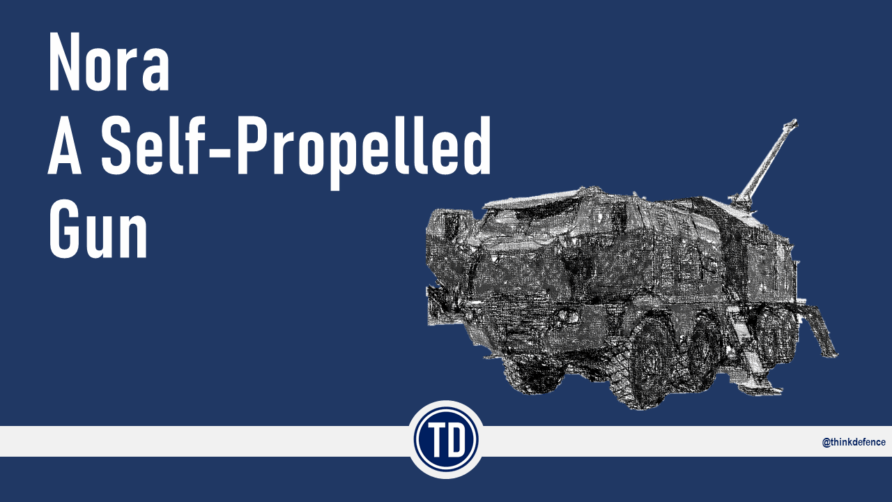
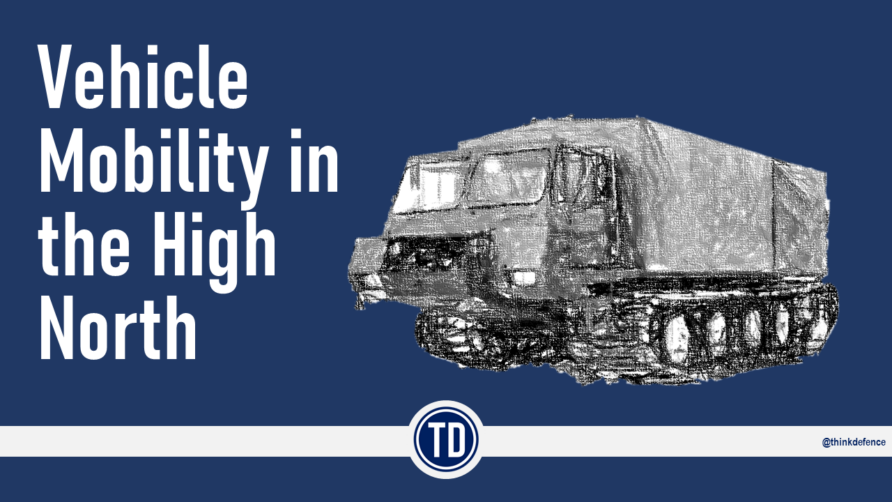
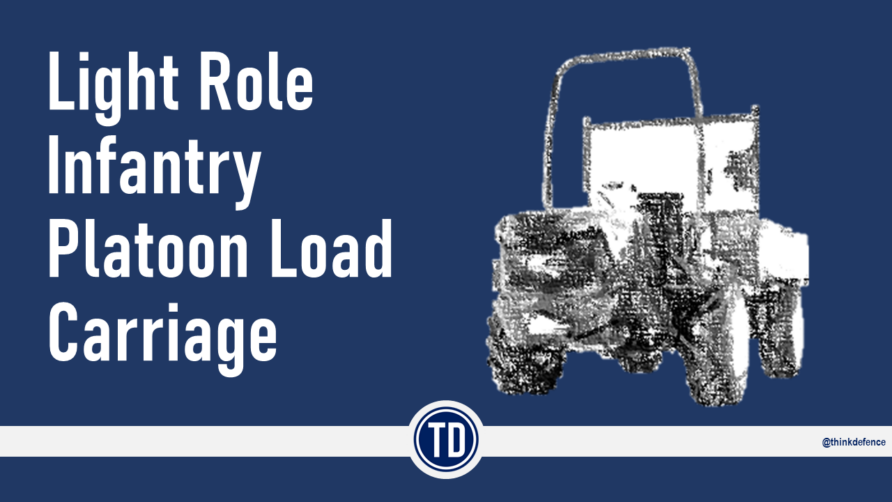
Excellent TD
” …proving yet again that hastily getting rid of equipment is usually a mistake.”
Nice article.
The section ‘The Mastiff and Vector purchases were expected to cost approximately…’ and the 29th October announcement appear twice.
That NP animation video was a gem
https://secure.gravatar.com/avatar/7862b281047238a6a6cf07050c583856?s=64&d=mm&r=g
ArmChairCvvy… LOOKS LIKE I can’t spell my name!
April 29, 2021 7:33 am
Awaiting for approval
That NP animation video was a gem
Thanks for the spot Martin, corrected!
The obsession with getting rid of stock dates back to the introduction of ‘Resource Accounting’ in the 1990s – a beancounter wheeze charging notional interest on the value of assets. For an early example see ‘Craftsmen of the Army, Volume 3’, Page 366 – ‘Unintended Consequences’.
A good read and one of the fairest descriptions of the programme so far.
So many accounts have distorted the events leading to the purchase of the Cougar base vehicle for the UK that I have almost given up trying to put the record straight! This one has a few minor inaccuracies: for example, I was talking to contacts in the UK MOD early in 2004 as soon as I started the Cougar programme for the USMC. Aspects of the design were based on my time working at RARDE on Chobham and ERA – so it was ready for that kit from the very outset.
Also – I tried to get the USMC to accept composite liners etc, but from they wanted a vehicle that was totally repairable in the field and in which the fire-risk was as low as possible. So I had a scheme to have internal steel spaced-liners (to prevent any upgrade from being identified by a would-be attacker) as well as additional external steel armour to take the protection to 50-cal AP as required by the US specs.
The hull was designed with a double-skin around the driver/commander area as it would be a nightmare to upgrade later, and it also added a lot of torsional rigity in the event of a mine-blast under a wheel. (I had witnessed blast trials that showed how a hull could twist, opening up a door for a split second – enough to allow steel and stones to enter and kill the crew).
It is curious that the NP video shows hulls being fabricated: I was not aware that they actually assembled the monocoque structure and perhaps someone could clarify that one.
Regarding the longevity of the vehicles, I tried to get the MOD to talk about the plans I drew up to extend the service life and payload, to include modifying the 6×6 mastiff version to an 8×8 layout – which is actually quite a simple task. No one was really interested – possibly because it was seen by some as a threat to the current CDS’ plan for the next-gen infantry vehicle (that will cost this country a fortune and deliver a vehicle we tested and rejected back in the 1990s!).
It should be remembered that the Cougar was an urgent development programme for the USMC that went from a fag-packet sketch to active service in Iraq in less than 6 months. It was always designed to be easily upgraded. Looks like someone has finally cottoned on!
Good article, very interesting. Nitpicky comment – that’s not a Snatch in the first photo (“Saxon and Snatch of the Queens Lancashire Regiment“)! It’s a standard soft top with people standing up in the back. If in doubt, see the front passengers elbow sticking out of the window, which is impossible in an armoured Snatch! Sorry for being pernickety… :-)
I think I know what happened to all the Vectors. They are always some for sale here. All non runners. Never fetch much money. https://www.brightwellslive.com/timedauctions/index/5152
Whoever thought of replacing Snatch with Pinzgaurers needs trussing up. Activating a mine with one of the wheels, the blast goes directly up towards the driver and passenger. Yes, they are great off road, but are not designed for operating in a conflict zone. Thankfully it was pulled from patrolling before too many were killed. Though those lost were far to many in my book.
Thankfully we got a couple of Foxhounds and apart from a ew teething problems they really well in Afghan. Certainly protected my team when hit my small arms and PKs, Had a few RPGs lobbed at us but they all missed. Unlike the Canadians we were teamed up with, we never struck a mine or hit by an IED. They had the RG31s and sadly lost quite a few lads when they were hit. Very weird sensation when travelling in the back of these things, due to the very large armoured glass windows. Felt like the whole world was watching you and when hit by MG fire would craze, but not get through.